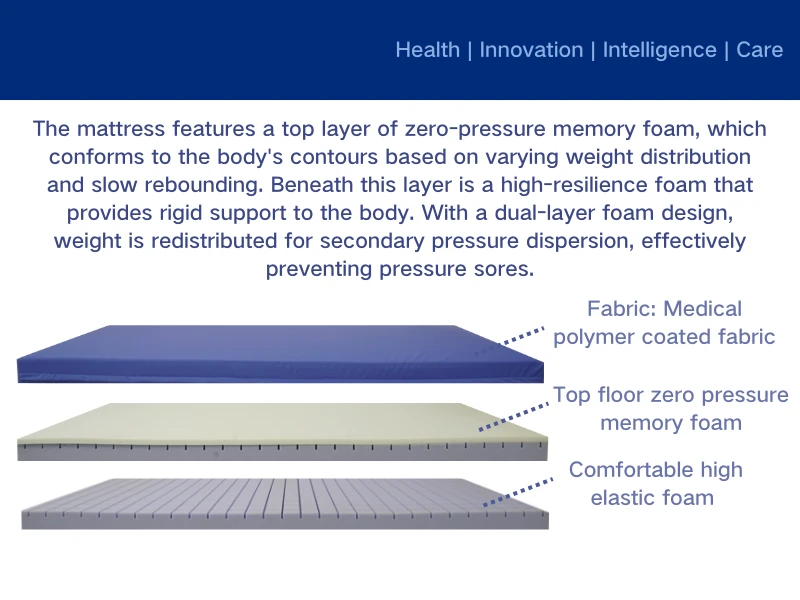Different Types of Hospital Bed Mattresses for Patient Comfort and Support
Understanding Hospital Bed Mattress Types A Comprehensive Guide
When it comes to patient care, selecting the right hospital bed mattress is crucial for ensuring comfort, preventing pressure ulcers, and promoting healing. Hospital bed mattresses come in various types, each designed to meet specific medical needs and patient conditions. This article aims to explore the different types of hospital bed mattresses, their features, and their benefits to help healthcare professionals and caregivers make informed choices.
Types of Hospital Bed Mattresses
1. Innerspring Mattresses Traditional innerspring mattresses are constructed using coils and springs. They offer decent support and are relatively affordable, making them a popular choice for hospitals. However, they may not distribute weight evenly, which can lead to pressure points for patients who are bedridden. Innerspring mattresses are generally used in less critical care situations and are often paired with protective covers for added hygiene.
2. Foam Mattresses Foam mattresses are commonly used in hospitals due to their lightweight, supportive nature. They conform to the body, helping to distribute weight evenly and reduce pressure points. High-density foam mattresses are particularly effective in providing comfort for patients at risk of developing pressure ulcers. These mattresses come in various thicknesses and firmness levels, allowing healthcare providers to tailor them to individual patient needs.
3. Gel-Infused Mattresses Gel-infused mattresses combine foam with a layer of gel to enhance comfort and cooling properties. These mattresses are designed to regulate temperature, preventing heat buildup which can lead to discomfort for patients who spend extended periods in bed. Gel-infused mattresses also help with pressure relief, making them an excellent choice for those at risk of skin breakdown.
hospital bed mattress types

4. Air Mattresses Air mattresses utilize air-filled chambers that can be adjusted for firmness, offering customizable support. They are particularly beneficial for patients with limited mobility or those at high risk for pressure ulcers. Air mattresses can be static (constant pressure) or dynamic (alternating pressure), which helps in reducing the risk of skin breakdown by continuously changing pressure points. This type of mattress is often used in acute care settings or for patients recovering from surgery.
5. Alternating Pressure Mattresses Alternating pressure mattresses are a more advanced option, designed to minimize the risk of pressure injuries. These mattresses use a pump to alternately inflate and deflate air chambers, creating a changing surface that continuously redistributes pressure. This system significantly reduces the risk of mattress-related pressure ulcers, making it ideal for patients who are immobile or have existing wounds. Additionally, these mattresses can improve circulation and promote faster healing.
6. Hybrid Mattresses Hybrid mattresses combine different materials—such as foam, gel, and air—into one unit, offering a balanced approach to comfort and support. These mattresses are designed to provide the benefits of both foam and air technologies, catering to a wide range of patient needs. Hybrid mattresses are particularly useful in rehabilitation settings, where patients may be transitioning between various levels of mobility and require different levels of support.
Conclusion
Choosing the right hospital bed mattress is essential for ensuring patient comfort and preventing complications such as pressure ulcers. While the selection may seem overwhelming, understanding the specific needs of each patient can guide healthcare professionals in making appropriate choices. Factors such as mobility, weight distribution, and skin integrity should be considered when selecting a mattress type. Ultimately, the right mattress contributes not only to the patient's comfort but also to their overall care and recovery, making it a vital component of the healthcare environment. Whether it’s an innerspring, foam, gel-infused, air, alternating pressure, or hybrid mattress, each has its unique benefits that cater to diverse patient requirements. Investing in high-quality mattresses is an investment in patient health, safety, and satisfaction.
-
The Truth About "Orthopedic" Mattresses for Sore Back PainNewsAug.23,2025
-
Space-saving Benefits of a Single Mattress CubeNewsAug.23,2025
-
Eco-friendly Advantages of a Silicon MattressNewsAug.23,2025
-
How to Fix Sagging in a Special MattressNewsAug.23,2025
-
How Ambulance Stretcher Mattresses Reduce Pressure InjuriesNewsAug.23,2025
-
Best Cleaning Practices for a Hospital Mattress DoubleNewsAug.22,2025
-
Mattresses Designed for Back Pain ReliefNewsAug.08,2025

